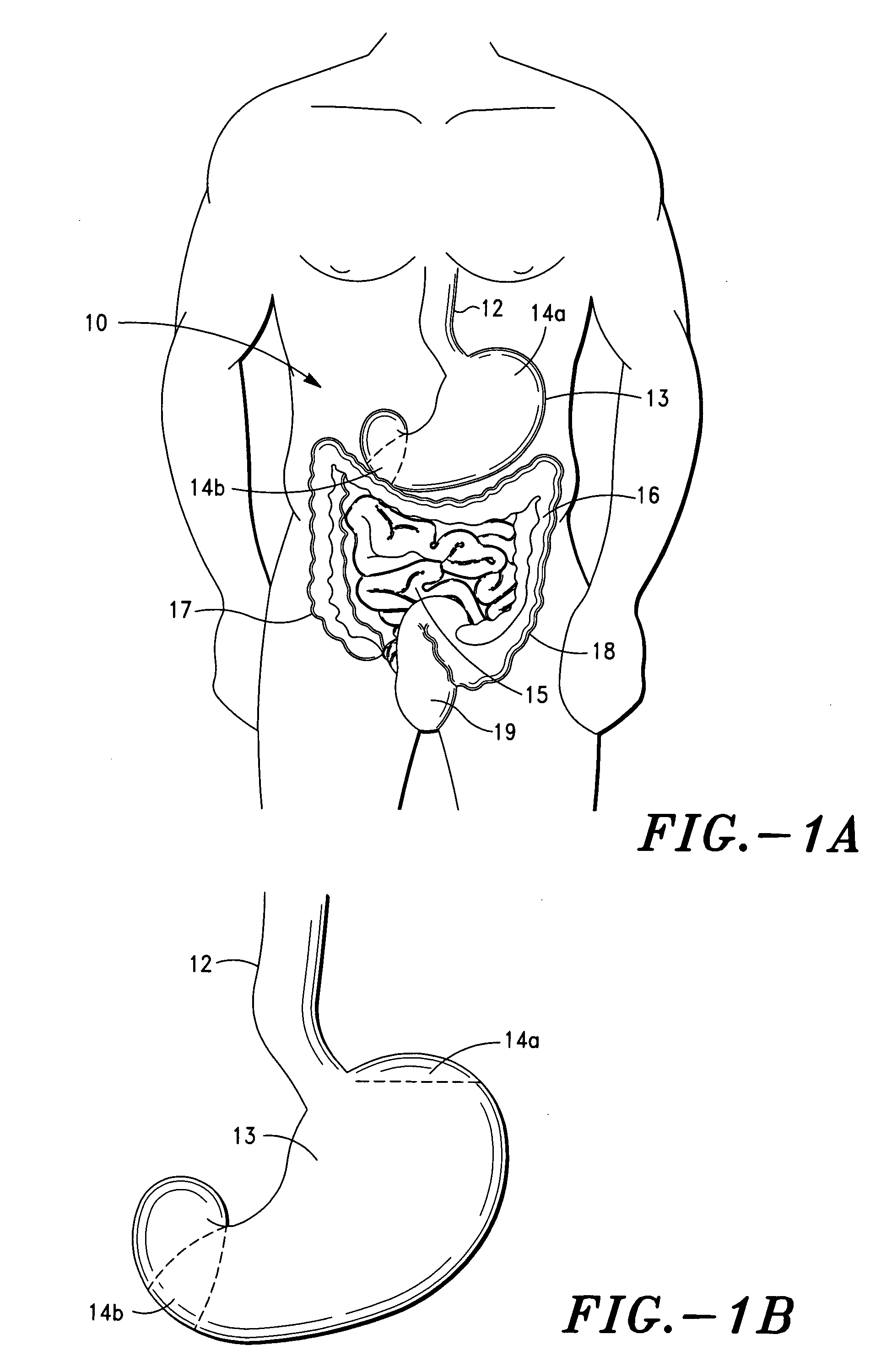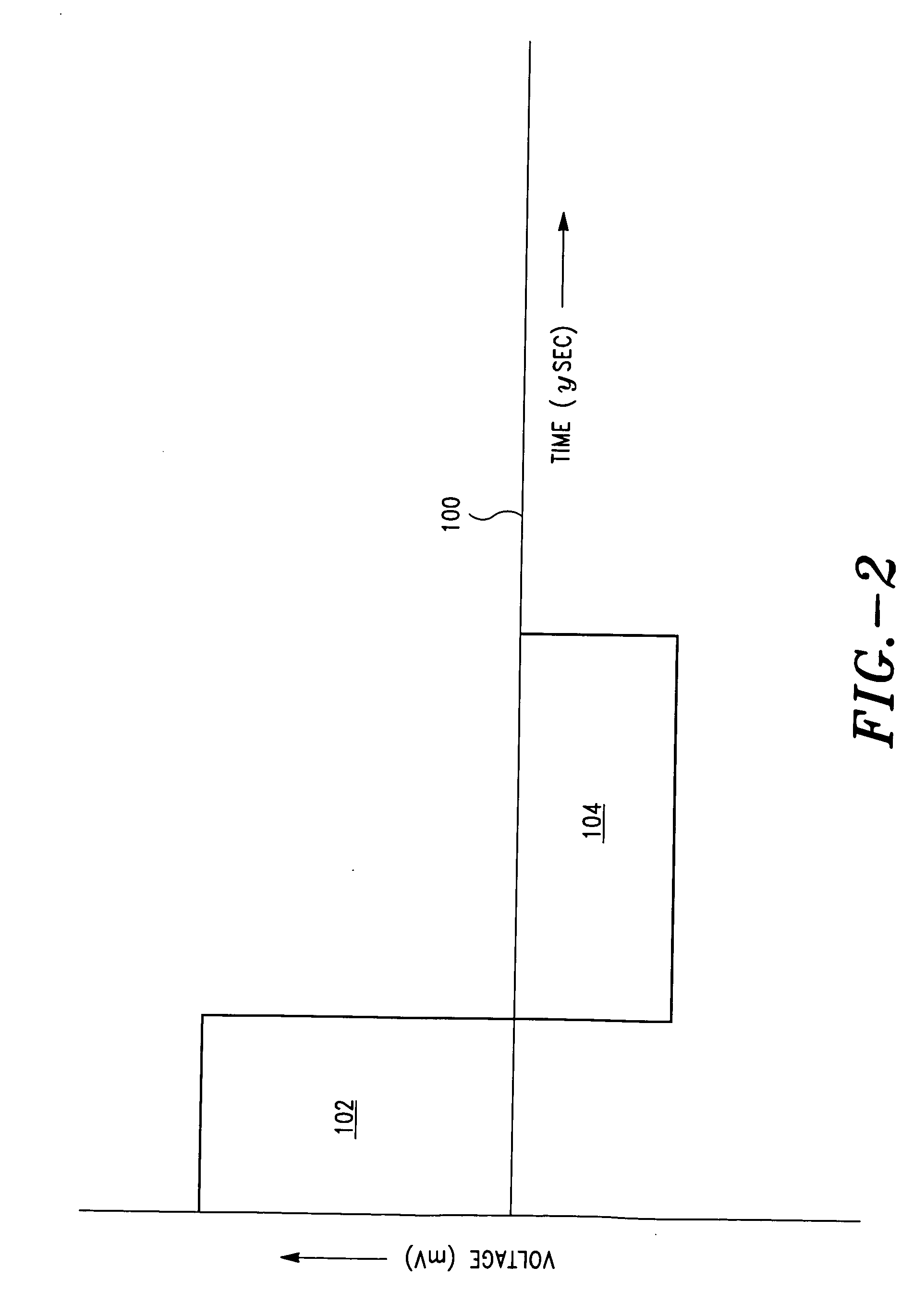Gastric restriction method and system for treatment of eating disorders
a gastric restriction and eating disorder technology, applied in the field of medical methods and systems for treating eating disorders, can solve the problems of reducing the treatment options of obese people, reducing the morbidity of morbid obesity, and reducing the number of morbid obesity cases
- Summary
- Abstract
- Description
- Claims
- Application Information
AI Technical Summary
Benefits of technology
Problems solved by technology
Method used
Image
Examples
example 1
[0152]A 45 year old female suffers from morbid obesity. She has been overweight since a first pregnancy, and her weight is now in excess of 200 percent of her ideal weight. She suffers from hypertension and sleep apnea, which her physician believes are directly related to her weight problem.
[0153]The patient consults with a physician and dietician to work out a diet and walking regimen for long-term weight loss. In coordination with this regimen, the patient has a gastric restriction system, such as system 50 (discussed above), implanted in her body. In this example, the gastric restriction system is designed to generate and transmit synthesized neurosignals that correspond to neuro-electrical signals that derive from the neck of the stomach that elicit a feeling of fullness or satiety in the brain.
[0154]In this example, the patient monitors her weight weekly. It is expected that the patient will have periodic visits to her primary care physician for adjustment in the gastric band, ...
PUM
 Login to View More
Login to View More Abstract
Description
Claims
Application Information
 Login to View More
Login to View More - R&D
- Intellectual Property
- Life Sciences
- Materials
- Tech Scout
- Unparalleled Data Quality
- Higher Quality Content
- 60% Fewer Hallucinations
Browse by: Latest US Patents, China's latest patents, Technical Efficacy Thesaurus, Application Domain, Technology Topic, Popular Technical Reports.
© 2025 PatSnap. All rights reserved.Legal|Privacy policy|Modern Slavery Act Transparency Statement|Sitemap|About US| Contact US: help@patsnap.com



